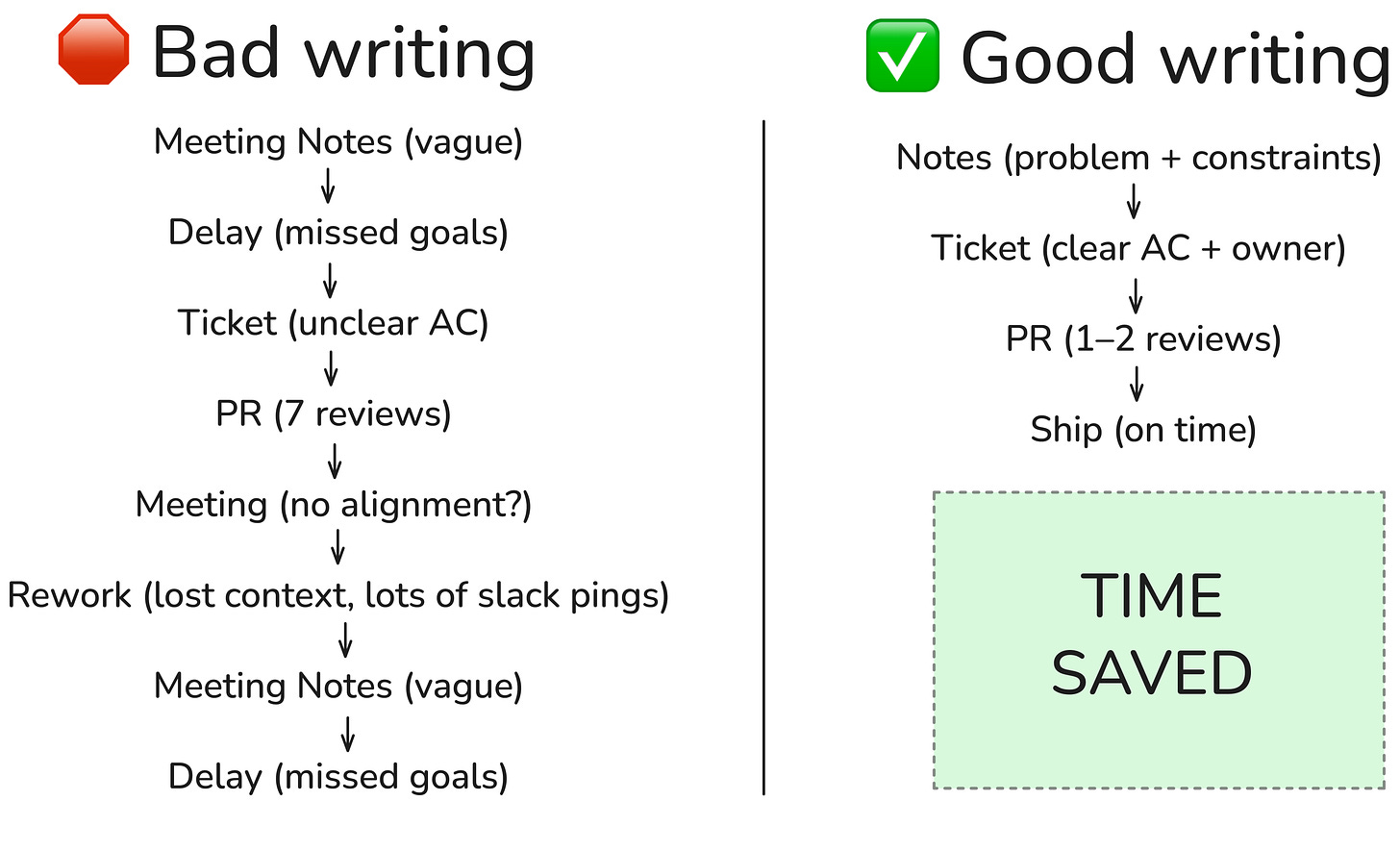Writing Skills Every Software Engineer Needs
Learn a simple writing system that turns notes into crisp tickets, PRs, and RFCs. Cut review cycles, reduce Slack pings, and help your team ship faster with fewer meetings.
Productive engineers ship faster when their writing sets direction.
If your design notes and tickets are crisp, you get fewer review cycles, fewer Slack pings, and fewer meetings.
You do not need to write online to get this benefit, although it helps. Start at work, write to point the team in one clear direction, write clean ticket descriptions and PR comments, and things will move faster.
“You don’t feel ready to start showing your work, but your work won’t be ready unless you start showing up.”
In this post, you’ll learn:
How publishing weekly sharpens design, debugging, and code reviews
A simple writing system I use, idea log → post → reflection
How feedback loops from readers carry into RFCs and PRs


